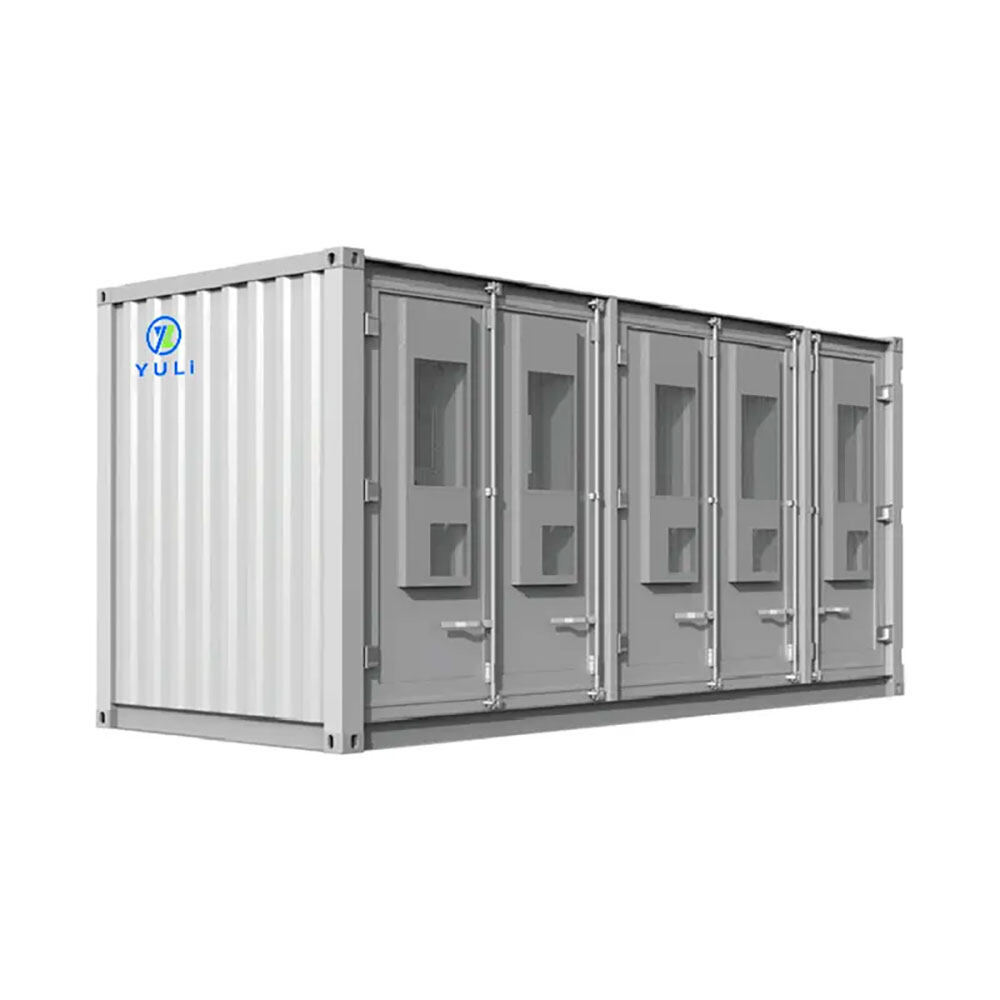Email format error
Email cannot be empty
Email already exists
6-20 characters(letters plus numbers only)
The password is inconsistent
Email format error
Email cannot be empty
Email does not exist
6-20 characters(letters plus numbers only)
The password is inconsistent


Wholesale Containerized Energy Storage: Transforming the Energy Landscape
In recent years, the demand for efficient and scalable energy storage solutions has surged, driven by the global push towards renewable energy sources and the need for a more reliable power grid. One solution that has gained significant traction is wholesale containerized energy storage. This innovative approach to energy storage offers numerous benefits, from ease of deployment to enhanced scalability. In this blog post, we will delve into the various aspects of containerized energy storage, exploring its advantages, applications, and future prospects.
Understanding Containerized Energy Storage
What is Containerized Energy Storage?
Containerized energy storage refers to the use of standard shipping containers to house energy storage systems, typically batteries. These containers are equipped with all the necessary components, including battery packs, inverters, and control systems, to store and manage electrical energy. The modular nature of these containers allows for easy transportation, installation, and expansion.
The Evolution of Energy Storage Solutions
Traditional energy storage solutions, such as pumped hydro and large-scale battery installations, often require significant infrastructure and long lead times for deployment. In contrast, containerized energy storage systems can be quickly deployed and scaled to meet varying energy demands. This flexibility makes them an attractive option for utilities, industrial applications, and renewable energy integration.
Benefits of Wholesale Containerized Energy Storage
Scalability and Flexibility
One of the primary advantages of wholesale containerized energy storage is its scalability. These systems can be easily expanded by adding more containers, allowing users to increase storage capacity as needed. This flexibility is particularly beneficial for renewable energy projects, where energy storage requirements can vary based on factors such as weather conditions and energy production levels.
Cost-Effectiveness
Containerized energy storage systems are often more cost-effective than traditional storage solutions. The use of standard shipping containers reduces manufacturing and transportation costs, while the modular design allows for incremental investments. Additionally, the rapid deployment capabilities of these systems can lead to quicker returns on investment.
Ease of Deployment and Maintenance
The plug-and-play nature of containerized energy storage systems simplifies installation and maintenance processes. These systems can be deployed in a matter of weeks, compared to months or even years for traditional storage solutions. Maintenance is also streamlined, as individual containers can be easily accessed and serviced without disrupting the entire system.
Enhanced Reliability and Resilience
Containerized energy storage systems are designed to withstand harsh environmental conditions, making them suitable for a wide range of applications. Their robust construction ensures reliable performance in both urban and remote settings, enhancing the resilience of the power grid.
Applications of Wholesale Containerized Energy Storage
Grid Stabilization
One of the key applications of containerized energy storage is grid stabilization. These systems can store excess energy during periods of low demand and release it during peak demand, helping to balance the grid and prevent blackouts. This capability is particularly important as the share of intermittent renewable energy sources, such as solar and wind, continues to grow.
Renewable Energy Integration
Containerized energy storage plays a crucial role in integrating renewable energy into the power grid. By storing energy generated from solar panels and wind turbines, these systems ensure a steady supply of electricity even when the sun isn't shining or the wind isn't blowing. This helps to address one of the main challenges associated with renewable energy sources: their variability.
Industrial and Commercial Applications
Industries and commercial establishments with high energy demands can benefit from containerized energy storage systems. These systems can provide backup power during outages, reduce peak demand charges, and enhance energy efficiency. For example, a manufacturing plant can use stored energy to power its operations during peak hours, reducing its reliance on the grid and lowering electricity costs.
Remote and Off-Grid Locations
Containerized energy storage is an ideal solution for remote and off-grid locations where traditional energy infrastructure is lacking. These systems can be paired with renewable energy sources to create self-sufficient microgrids, providing reliable power to communities, mining operations, and military bases in remote areas.
Technological Advancements in Containerized Energy Storage
Battery Technology
The performance of containerized energy storage systems is largely dependent on the type of batteries used. Lithium-ion batteries are currently the most common choice due to their high energy density, long cycle life, and declining costs. However, other battery technologies, such as solid-state batteries and flow batteries, are also being explored for their potential to enhance energy storage capabilities.
Energy Management Systems
Advanced energy management systems (EMS) are integral to the operation of containerized energy storage systems. These systems use sophisticated algorithms and real-time data to optimize the charging and discharging of batteries, ensuring maximum efficiency and longevity. EMS also enable seamless integration with other energy assets, such as solar panels and wind turbines.
Modular Design and Standardization
The modular design of containerized energy storage systems facilitates easy scaling and customization. Standardization of components and interfaces further simplifies the integration and deployment of these systems. As the market for containerized energy storage continues to grow, increased standardization is expected to drive down costs and enhance interoperability.
Future Prospects of Wholesale Containerized Energy Storage
Market Growth and Trends
The global market for containerized energy storage is projected to experience significant growth in the coming years. Factors driving this growth include the increasing adoption of renewable energy, the need for grid modernization, and supportive government policies and incentives. Market trends indicate a shift towards larger and more sophisticated storage systems, capable of meeting the evolving needs of the energy sector.
Policy and Regulatory Support
Government policies and regulatory frameworks play a crucial role in the adoption of containerized energy storage. Incentives such as tax credits, grants, and subsidies can make these systems more affordable for businesses and utilities. Additionally, regulations that promote grid resilience and renewable energy integration can drive the deployment of containerized storage solutions.
Research and Development
Ongoing research and development efforts are focused on enhancing the performance and reducing the costs of containerized energy storage systems. Innovations in battery technology, energy management systems, and container design are expected to drive the next wave of advancements in this field. Collaboration between industry, academia, and government institutions will be key to realizing these innovations.
Conclusion
Wholesale containerized energy storage is poised to play a pivotal role in the transformation of the global energy landscape. Its scalability, cost-effectiveness, and versatility make it an ideal solution for a wide range of applications, from grid stabilization to renewable energy integration and beyond. As technological advancements continue to enhance the performance and affordability of these systems, their adoption is expected to accelerate, driving the transition towards a more sustainable and resilient energy future.
By understanding the benefits and potential of wholesale containerized energy storage, stakeholders across the energy sector can make informed decisions and investments, contributing to a cleaner and more reliable power grid for generations to come.
